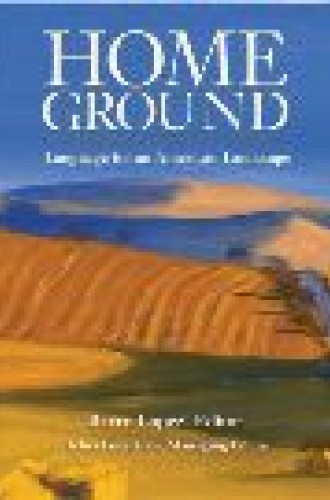Home Ground
So out of the ground the Lord God formed every animal of the field and every bird of the air, and brought them to the man to see what he would name them” (Gen. 2:19). With this organizing instinct given to us from “the beginning,” human beings have named things of the earth so that the earth may be known and its elements compared, studied and recalled in charts, texts and catalogues, as well as in literature and the interactions of daily life. For Home Ground: Language for an American Landscape, journalists, novelists, poets and essayists were invited to define the names people have given to the geographic features that poke, wind, bubble, crack, spread, shimmer, jut and swirl before our eyes.
Environmental essayist and short-story writer Barry Lopez edited this coffee-table reference to the various outcroppings, indentations, bends and turns of the elements of earth, as observed and related to by human beings. The lexicon gathers 850 common and colloquial designations for geographic features, pairing them with brief commentary from notable authors who have firsthand knowledge of the thing or phenomenon they describe. The book will please curious travelers, cultural historians and students of local environments. Field sketches and attractively set passages from literature illustrate the book’s pages. Broad and general terms—prairie, savanna, desert and forest—fall into alphabetical line with less familiar regional and local usages, some nearly forgotten, such as bogan (a marshy backwater), drumlin (a low, oval hill), loblolly (a mud hole) and thank-you-ma’am (a bump in a country road).
The introduction claims that while the anecdotal entries were not prepared according to accepted standards of an academic discipline, they were reviewed and approved by credentialed geographers. That stamp of expert approval lets the reader relax in the book’s informal charms. Generous indexes of terms, names and places await the reader at the end.
The contributors have paid reverent attention to the plain facts of the natural environment, bringing them into vivid focus with brief, suggestive paragraphs. In the entry for swash, for example, Ellen Meloy writes, “On the fretted seam between water and land, ocean breakers send a rushing sheet of water—a swash—up the beach.” Pattian Rogers writes about eskers, ridges of gravel also called serpent kames: “Eskers are long, narrow, usually twisting ridges, formed by meltwater streams that ran beneath the ice of a retreating glacier.” Arturo Longoria reports that in Mexico and the American Southwest, a ceja is “a line of trees at the edge of a meadow, or the thin strips of clouds above a chain of mountains, or a sliver of moon . . . because each resembles an eyebrow—the meaning of ceja in Spanish.” We read of sloughs and sea caves, of waxing slopes and hanging valleys. Linda Hogan informs us that an erg is a sand sea and that “the only active erg in North America is the Gran Desierto of northern Sonora.”
There is a planned unevenness about this book and a certain childlike playfulness in the dictionary format. With a single creative writer covering each geographic term, the volume has the feeling of a colorful assembly with a series of speakers, each perceptive person stepping forward to honor one phenomenon of the earth. The writers let the earth have its say: the tallgrass prairie and the walled lake, the impact crater and jackstraw timber. This partnership suggests a committed stewardship and a vision even deeper than a naturalist’s view; one can almost hear mountains and hills bursting into song, and trees of the field clapping their hands.





